
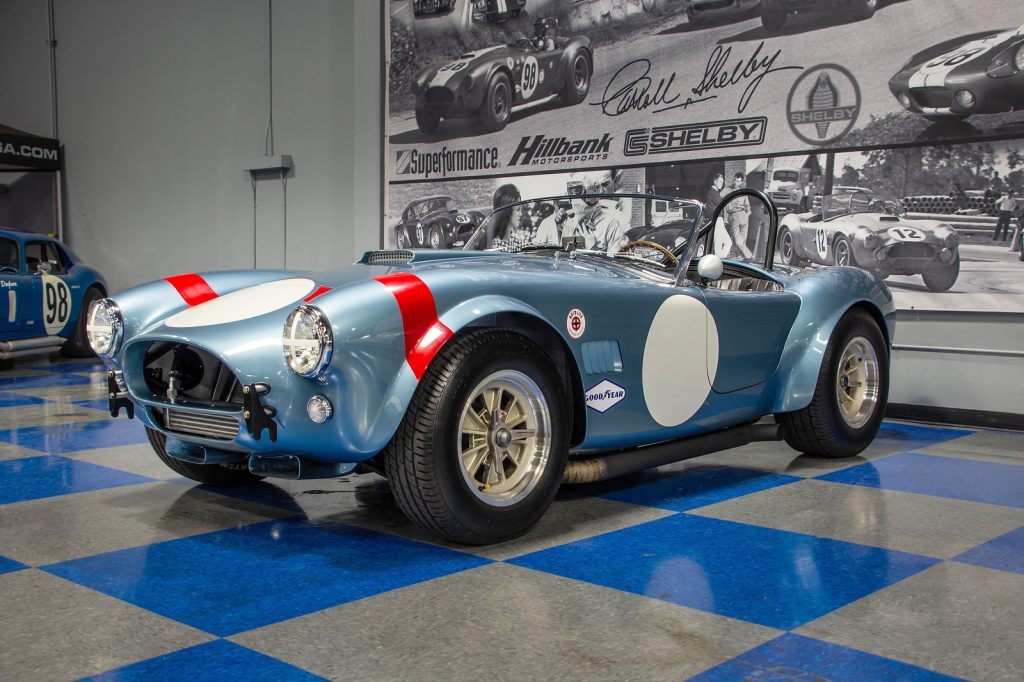
MKII FIA


The Superformance MKII FIA reflects a race winning legend
Designed to emulate the great Cobra 289 race cars from that nostalgic golden era of racing in the 1960s. The MKII FIA is the 1st licensed continuation of the original AC-derived 289 Cobra that first appeared in 1962 winning 5 races. Loyal to the original lines and proper nostalgic characteristics of the original 1962 Cobra FIA, this car is built for the heart-racing 289 motor and a more modern Tremec TKO transmission. The MKII FIA can be tracked or street driven.
Unlike most competitors, the MKII FIA is built on the successful Tojeiro-styled round tube chassis and features an authentic transverse leaf spring suspension to give owners an exceptionally authentic driving experience. Through our exclusive agreement with Carroll Shelby, the MKII FIA is a licensed Shelby.
- Show quality two-stage paint finishes
- Heavy duty TIG welded 3" Tojeiro style frame chassis
- Salisbury limited slip differential
- Original style shifter and hand brake lever
- Sun Visors and wind wings
- Moto - Lita wooden steering wheel
- Aluminum hi-performance radiator, shroud and fan
- Stainless steel fuel tank 14 gallon
- Hand laminated fiberglass body with reinforcing inserts
- Transverse leaf spring style suspension
- Willwood® front and rear disc brakes with double master cylinders
- Aluminum interior, trunk and engine compartment
- Original style latch-lock seat belts
- Monza style filler
- Original style gauges (Stewart Warner) and switches
- Stainless steel roll bar, chassis mounted
- FIA spec dashboard
- Transverse nose stripe
- Tonneau cover
- Leather seating surfaces (drivers and passenger adjusts)
- Fuel cap wind deflector
- Differential oil cooler
- Stainless steel quick lifts
- Door map pockets
- White painted wheels
- Side pipes and headers to accommodate Ford based V8 engine
- FIA spec trunk with dimples
- Soft top and side curtains
- Side and rear view mirrors
- Ken Miles exhausts system side pipes (ceramic coating extra)
- Harrison expansion over flow tank
- Auxiliary Racing tank
- Black cockpit carpets fitted
- Fuel transfer valve
- Oil cooler and braided lines
- Aluminum 6 pin drive FIA style wheels (Knock – off) with 15” tires
Dimensions & Capacities
- Wheelbase: 90"
- Length: 151.5"
- Height (Top of screen): 45"
- Width (Overall): 72"
- Track Front: 53"
- Track Rear: 53"
- Fuel Tank: 14 gal.
- Front Wheels: 15" Dayton 70 spoke knock off
- Rear Wheels: 15" Dayton 70 spoke knock off
- Tires-Front 205/70 R15
- Tires-Rear 205/70 R15
- ZF Limited slip differential, ratio 3:46:1
- Salisbury differential, ratio 3:54:1
- Chassis: Round Tube
- Body: Fiberglass with steel tube reinforcements
- Body Reinforcements: Beneath doors, hood and trunk
- Front Suspension: Transverse leaf spring, Spax adjustable shocks
- Rear Suspension: Transverse leaf spring, Spax adjustable shocks
- Steering: Rack and pinion
- Pedal Box: ¾ clutch master cylinder, 2x ¾ brake master cylinders with balance bar
- Front Brakes: Wilwood 4 pot dynalite
- Rear Brakes: Wilwood 2 pot with handbrake incorporated
- Exhaust system: Twin pipe rear exit
- Instrumentation: Stewart Warner
- Interior: Motolita steering wheel, leather/vinyl seats
- Weather: Optional soft top, side screens and tonneau cover
- Recommended engine & transmission: Ford 289/302 based with TKO 600
Design
Based on the FIA and USRRC endurance racers, the Superformance MKII FIA has many unique features. Just as the originals saw modifications to the AC Ace platform to improve them for racing, the Superformance MKII FIA gets a series of changes to differentiate it from lesser Cobras.
Chassis
To truly replicate the cornering feeling felt by the racers of the day, the chassis had to be as close to the original as possible. Unlike other manufacturers, the engineers of the Superformance MKII FIA have resisted the urge to make the ride “better” by fitting a reinforced chassis or unequal length control arms with coil-over shocks. Instead, only small functional changes were made for safety or practicality purposes. In fact, the original AC drawings of the chassis, springs, shocks and body dimensions were used to form the necessary jigs.
The 3” pipes have been tig and mig welded with computer assistance to guarantee a safer and stronger chassis than the arc and gas welded originals. The chassis is just about as close to the original as possible in this modern day. Building the cars with a meticulous eye on authenticity took time, but in the end, we feel that effort pays off in a superior driving experience for customers.
Interior
The FIA dash was altered by leveling the two shorter elements on either side of the center stack. This allowed the steering column to be dropped to give a more comfortable racing position as well as making enough space for the 3-3/8″ Stewart Warner tachometer to fit above it. In this position it was more visible to the driver. The rest of the instruments were replaced by the larger 2-5/8″ gauges and arranged differently on the dash. The speedometer, for instance, has been relegated to the passenger side. The bottom of the dash also features an upturned lip for strengthening, which also helps cure cowl shake. Strangely the grab handle remained, possibly to meet the FIA production regulations.
Front & Rear Suspension
Just like with the chassis, the same rule applied with the suspension development – it had to be period correct, or as close to it as possible. While the original used a transverse leaf spring style suspension, that arrangement requires different length springs to change camber settings. Because of that, the decision was made to go with heim joints, just like some of the original competition cars used. In fact, two options are offered here – The first being rose joints and the second being adjustable rod ends with poly bushings for a slightly less harsh ride.
Another change for safety was to add an additional pick-up point to the chassis in order to increase the shear strength of the bolt passing through the lower control arm rose joint or poly-bushed rod end. The original springs were made of thinner steel than that available today, so the engineers milled the modern units to the correct size and thickness. This insistence on authenticity means that owners of a Superformance MKII FIA will have virtually the same driving experience as those original racers from the ’60s.
Body
The Superformance MKII FIA bodywork replicates the European FIA regulated form but is here produced in fiberglass. While every one of the FIA cars differed in some small way from the others, one of the identifying characteristics were the different colored stripes painted across the fenders and hood of the Team Shelby cars.
The Superformance MKII FIA features the larger Le Mans type fuel filler placed almost directly behind the passenger’s seat to enable easier pit refilling. Just like the originals, cars may also be fitted with a small wind deflecting shield to prevent fuel being sucked out and into the car at speed.
More fuel was required in the endurance-racing FIA cars, so a special long-range fuel cell was fitted in the trunk. Because the FIA required there be enough room in the trunk for a regulation size suitcase as well, two dimples had to be “engineered” into the boot lid for it to close properly. Legend has it that the first dimples were actually created when the aluminum trunk lid was slammed shut over the luggage by a frustrated mechanic. The reserve fuel switchover valve has been placed on the floor between the driver’s legs just in front of his seat.
The hood of the Superformance MKII FIA also gets special treatment. The rivets that appear on the front of the hood were there to prevent the aluminum from being torn off of its frame at high speed. This was known to happen on the originals, due to the high pressure build-up in the engine compartment. The fender air vents helped to alleviate that problem and to remove excess heat from the engine compartment as well. Fiberglass air scoops are also fitted in three locations to feed cold air onto the front and rear brakes as well as into the cabin foot wells.
Because of the use of larger tires on the FIA cars, the rear and doors were modified to accommodate them. Cut back doors and a more bulbous rear appeared, and the front fenders were flared even further to cover the larger front tires as well. Oil coolers for both the motor and differential have been fitted. Rondel illuminating lights were fitted on the sides of some of the originals for night racing and are available here as well. A roll bar has also been fitted with a forward angled support tube brace bolted to the chassis in the passenger’s foot well. No carpets were fitted and all other trim was also removed.
Engine & Transmission
Under the hood of the originals resided a race 260 or 289 equipped with Webers. Only the first 75 cars were fitted with the 260 before the switch to the 289. The FIA cars also featured a Harrison radiator expansion tank (sourced from a 1963 Corvette) that was fitted above the transverse spring, and side exhausts that exited at the rear of the doors.
PLEASE NOTE:
All Superformance products are supllied complete, but without engines and transmissions. The selection, purchase and installation of the drive train are the responsibility of the purchaser.
Superformance MKII FIA bodies are available in three standard colors with or without striping. Striping can be any of the standard MKIII colors and is painted as the first coat color on the body creating a smooth finish. Stripes are an added option. Custom paint is also available, please contact your dealer for more information.
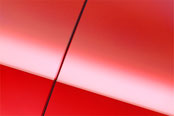
Monza Red

Sunset Red

Black
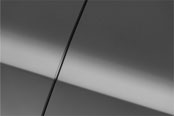
Dark Silver
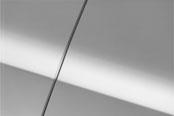
Light Silver

Titanium Silver
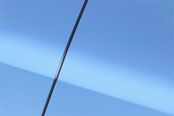
Portofino Blue

Galaxy Blue

Royal Blue

Indigo Blue
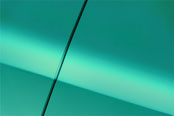
Malachite Green

British Racing Green
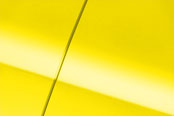
Yellow

